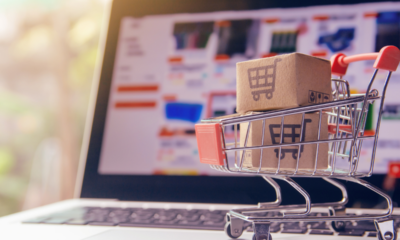U.S. consumers spent $204.5 billion on e-commerce purchases during the holiday season, according to data from Adobe. This represented an 8.6% increase in online spending YoY.
The numbers show that e-commerce spenders spread out their shopping more over the months of November and December. For instance, in the weeks before Nov 24, spending was up a whopping 19.2% YoY, while the period between Thanksgiving and Cyber Monday – the so-called “Cyber Week”), spending was down 1.4% from the previous year. Sales were up again in the weeks after Nov 30, growing 5.6% YoY.
Undeterred by supply chain challenges. Disruptions to the supply chain created difficulties for shoppers even though they spent at record volume.
Online shoppers saw over 6 billion out-of-stock messages during the 2021 holidays, according to the Adobe study. This was 253% higher than 2019, in pre-pandemic times. It was also 10% higher than last year.
Less discounting. Online shoppers were ready to buy despite seeing fewer discounts. In the electronics category, for instance, discounts were only 8% off the full price, compared to an average of 21% off in 2020. Computers saw a 10% discount in 2021 compared to 22% off in 2020.
There were marginally higher discounts in 2021 for apparel and toys.
Read more: Predictions 2022: Ecommerce everywhere
BNPL grew substantially. Buy Now Pay Later (BNPL) saw double-digit growth in the most recent holiday season.
Revenue on BNPL purchases were up 27% Y0Y, and orders were up 10%. On average, shoppers were spending $224 per order, with about three items in their cart.
Why we care. Ecommerce was a major disrupter in the retail industry before the pandemic. It then became a saving grace for many brands and consumers. This transformation affects all marketers in their approach to digital channels and timing.
Marketers have to plant their flag earlier because their customers are in holiday mode by the beginning of November. This overall leveling of seasonality is here to stay. New digital approaches to retail like BNPL and curbside pickup will help brands in all categories gain an edge on their competitors.
The holiday season begins earlier online, but digital channels also help marketers right down to the wire. According to Adobe’s numbers, curbside pickup didn’t gain any ground in 2021 over the two previous years, all hovering around 22%-24% of online orders. But that is almost a quarter of these sales overall, and that percent peaked at 40% on Christmas Eve.





















You must be logged in to post a comment Login